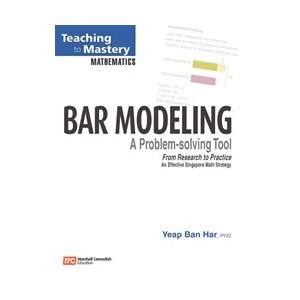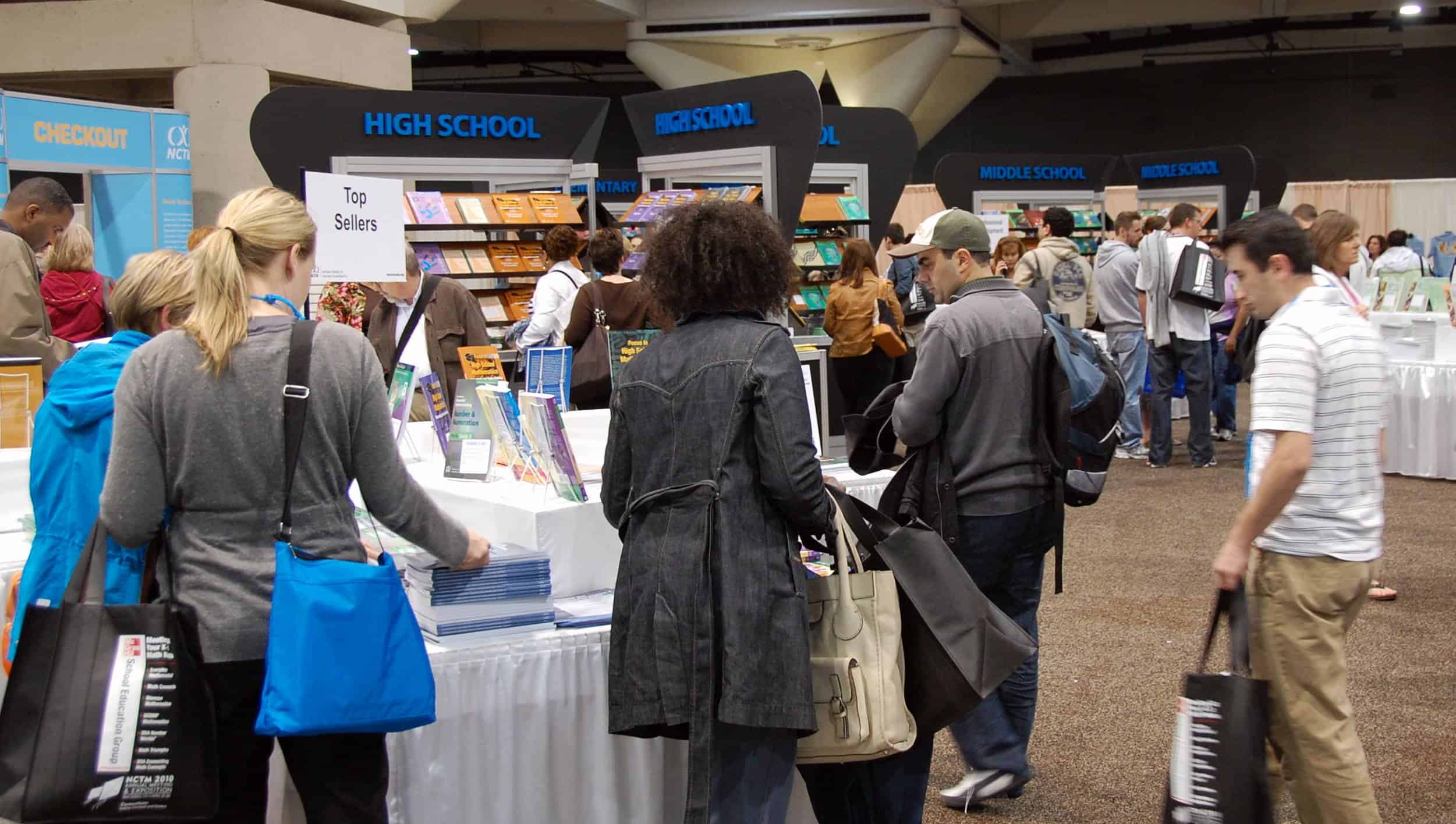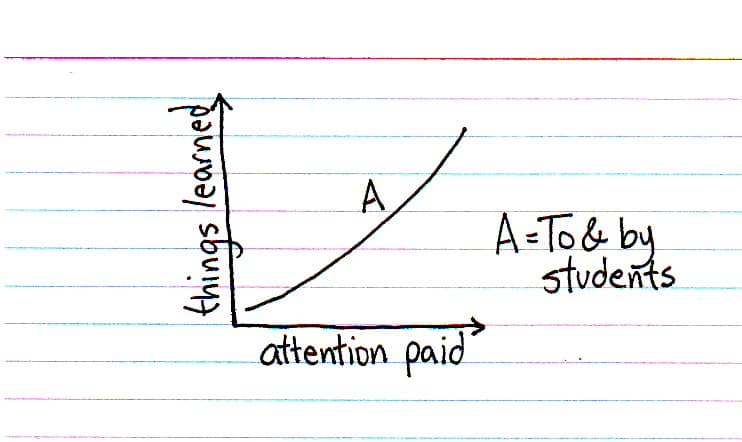Last week, two mathematics conferences were held in San Diego: The NCSM (National Council of Supervisors of Mathematics) and the NCTM (National Council of Teachers of Mathematics). This is the second in a series of posts from those conferences.
The vendor exhibit hall at the National Conference of Teachers of Mathematics reminds me of a state fair Merchandisers Building. Many of the large corporations have presenters with headsets a la Brittney Spears and offer a reward for sitting through a presentation. With 175 vendors, many of whom have presentations running continuously, the hall floor can be crowded and hard to navigate, but well worth taking the time to visit. There were people waiting for the exhibit hall to open each morning and many talked about needing an additional suitcase or paying luggage fees to get their samples and freebies home. (And some just bought extra luggage right there on site from the vendor, Tutto.)

I spent quite a bit of time at the Houghton Mifflin Harcourt exhibition booth perusing the available Math in Focus books. According to the series authors, Math in Focus started with the same math covered in My Pals are Here, which is currently used by 86% of the primary schools in Singapore, and then made some additions.
Here’s a full list of the program components on the Math in Focus.
Additions to My Pals are Here content include:
- Aligning to NCTM Focal Points
- Addition of a Kindergarten Level
- Chapter Opener and Chapter Reviews to each textbook
- Adapted language and units of measure for US market
- Added worked examples to Student Workbook
Additional materials for the U.S. market include:
- American Teacher’s Guide
- Assessment books
- Differentiation materials: Reteach and Enrichment student books
- Technology materials:
- CD-ROM of Virtual Manipulatives and Teacher resources.
- Online versions of the Student Books and Workbooks, the Teacher’s Edition
- Online assessment generator
- Complete manipulative kits
In addition to Math in Focus, the NCTM Exhibit Hall featured several Singapore Math-related displays. Both of the following booths had a sample and flyers for a new book on bar modeling, which will be available later this month:
- SingaporeMath.com had samples of both the Primary Mathematics U.S. and Standards Editions as well as the secondary materials and Singapore science they offer. Copies of the new Challenging Word Problems series, aligned to both Primary Mathematics versions will be available soon.
- Marshall Cavendish Online demo-ed their online version of Primary Mathematics. Register now for trial access. Full access should be available in the fall. I’ll post a full review when I’m done working through all of the lessons currently available.
Two companies that provide Professional Development on Singapore Math curriculum also had exhibit booths:
- SMARTTraining, LLC, had samples of their materials for sale, including a Sprint Library series, and place value disks that match the colors of the materials used in the Primary Mathematics books. (Full disclosure, I was a co-founder of this company, though I’m no longer affiliated with them, I continue to offer Singapore Math training and related-services.)
- Staff Development for Educators also provides training and hosts a Singapore Math Strategies Conference in Las Vegas, Nevada in July.
Of course, most vendors were unrelated to Singapore Math. Of these, one in particular got my attention. T-ime Education is introducing a new curriculum to the United States based on the Korean Mathematics model, Numino which is:
a classroom-based and computer-based curriculum developed by T-ime Education to develop elementary students’ critical thinking and problem solving abilities and builds upon their skills to acquire mathematical competence.
Coming up, session reviews…

























